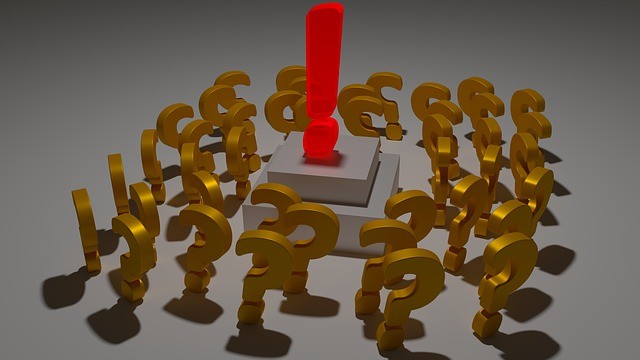Are Your Fake Followers Sabotaging Influencer Marketing?

According to a CNN estimate, about 83 million Facebook accounts are fake. Twitter has about 20 million dummy accounts. According to a group of Italian security researchers, 8% of Instagram users are spam bots. Now these may not be outstanding figures with respect to the total number of social media users out there, but for digital marketers they pose a real concern.
When we say that brands generally see returns of $6.5 for every $1 spent on influencer marketing, we’re talking about a research-based figure confirmed by majority of marketers. However, we recognize the risks, too. Putting your trust on influencers, typically the ones with massive following, opens you to greater risks of deceptive social media numbers.
A considerable fraction of the following size of famous celebrities and politicians comprises fake accounts and bots. If you’re a famous person or an authority in your niche with hundreds of thousands of followers, chances are some of your followers aren’t real. Maybe, it’s not your fault. After all, it’s natural for social media users, real and fake alike, to gravitate towards popular pages and networks. Many brands and influencers are guilty of buying followers, however. If you buy followers, you’re buying bots to like and share your social media posts, creating false online popularity. You can trick brands into paying you for promotion that will not work because a good bulk of your followers are not real people.
Fake accounts and spam bots
One challenge in influencer targeting is finding an influencer with real followers. Unfortunately, there are no useful tools for checking the authenticity of someone’s patrons. Still, the only thing you can do, and possibly the most reliable way, is to do a manual check. You don’t have to see the background of all of the thousands of followers, but you can do random checks on a few posts to see who are liking, sharing, and commenting. See if the accounts come from authentic users.
Random spikes in follower growth
Influence comes both from popularity and authority. Popularity isn’t an overnight affair. Real authority doesn’t become apparent until months or years of work. It takes time to attract a huge following. You have to provide quality content for a long time. You need to be slowly recognized by trusted authorities in your niche and related niches one by one. Influencers who are after organic engagement know this. There is no point paying bots to spam comments to create influence. Bots are for false popularity. False popularity doesn’t translate to influence. If your followers are not humans, you can’t move them to go to an event, join a collaborative work, or buy your stuff.
If you’re looking at influencer marketing analytics, you can spot signs of fake accounts getting directed by an influencer to your channels. Random spikes should be a red flag. Otherwise, expect a steady growth in your following size. A sudden spike in following or likes followed by a relatively flat line in your metrics signals something uncanny.
While the graph of your follower growth doesn’t have to look like a smooth uphill slope, it shouldn’t look like a lone tower amid the plains.
Erratic demographics
Demographics is an important collection of information about your audience. Most businesses operate locally and, thus, rely on local consumers. This means that the right social influencers for you are those who have audience in the town where your business is. If your business is in Florida, it doesn’t make sense to have someone promote your brand in Oregon.
But supposing you agreed to work with an influencer in Florida because he has lots of followers. Does that mean you’re in good hands? Without taking into account the demographics of his followers, you’re at risk of funneling your resources into a partnership that may not be prolific.
If you think working with fraudulent influencers with fake followers will work for you, think about it. Maybe that person can drive your social channel’s engagement. Then you’ll have a surge in likes and shares of your posts. That’s the end of it. If you’re not concerned about conversion, then it’s really fine. If you are, you better save your resources and find an influencer with largely organic following. Bots won’t come to your brick and mortar shops to buy your products.
Zero or almost zero new user engagement
A sign that your influencer marketing strategy is working is improvement of your social media metrics. More people follow you. Your posts get more likes as the day goes by. More people share your posts. Increasing engagement on your social media channels means your influencers are able to convince their people to check you out. It’s true influence on true people.
But what if a social media celebrity isn’t getting you the expected engagement numbers? Consider it a red flag. Frankly, that should prompt you to investigate. Maybe check the accounts that follow that person. Maybe check who are liking and sharing their posts. Do you see a similar set of accounts liking and sharing their posts? Do you see identical comments in the comments section? Are their followers mostly people with a few friends and profile photos of celebrities or models or cartoon characters? If yes, then your influencer probably has fake followers.
Fake followers, a no-no in marketing
Well, the reason is obvious. If you’re working with someone who bought followers, why don’t you just buy your own followers and see if doing so works for you? You can do that and create an impression that your Facebook page or Instagram business account is getting so much traction. Most of these faux influencers act like unscrupulous marketers anyway, charging you fees for every campaign.
Irrational tactic
Having fake followers, whether your own or your influencer’s, defeats the very purpose of influencer marketing, which is bringing your brand to consumers. Fake accounts can’t be consumers. No matter how much they augment your follower count and engagement rates, the best thing they do is create an illusion of a healthy social media channel.
Influencer marketing thrives on the trust people have in a blogger, niche expert, thought leader, artist, or professional. Bots can’t trust. They can’t relay authentic messages to other people. You can’t talk to them. You can’t ask them if they like your salad.
Unreliable following
Fake accounts are controlled by businesses that create them to sell to businesses and politicians. You don’t own them. You don’t have their trust. At anytime, these accounts can be pulled out of your pages. Things like that happen. For instance, if the owner of these bots shuts operation down for some reason, you’ll lose them in a snap. If a bulk of your influencer’s and your followers comprises these unreal entities, your social metrics will consequently plummet.



